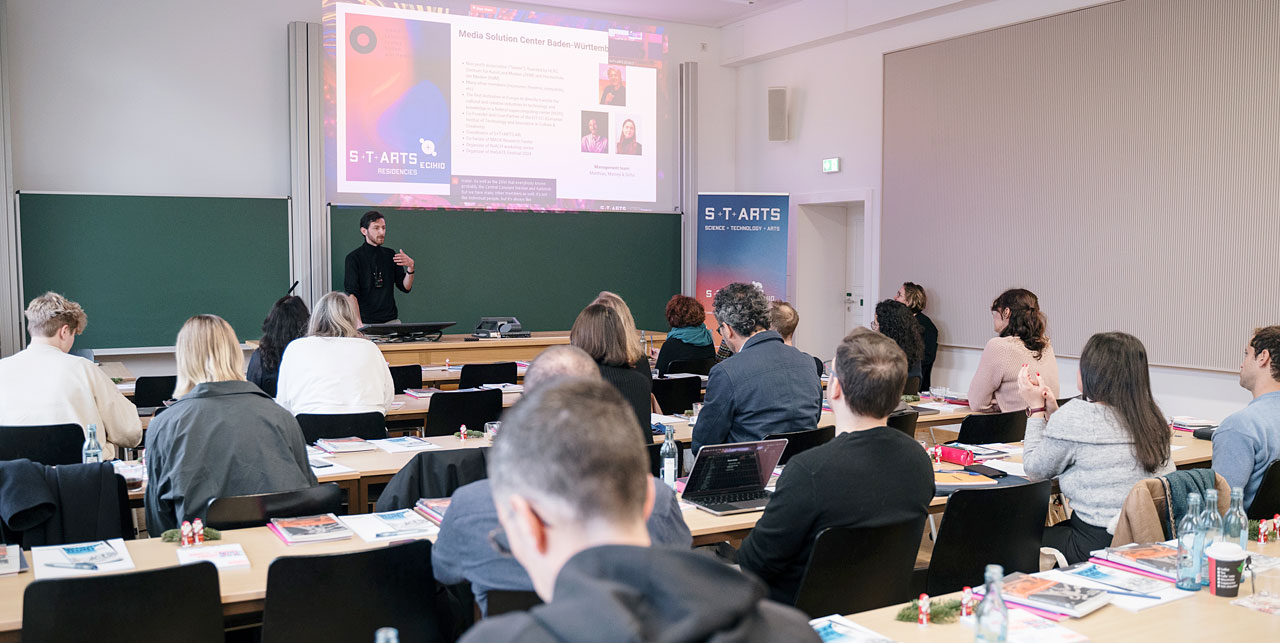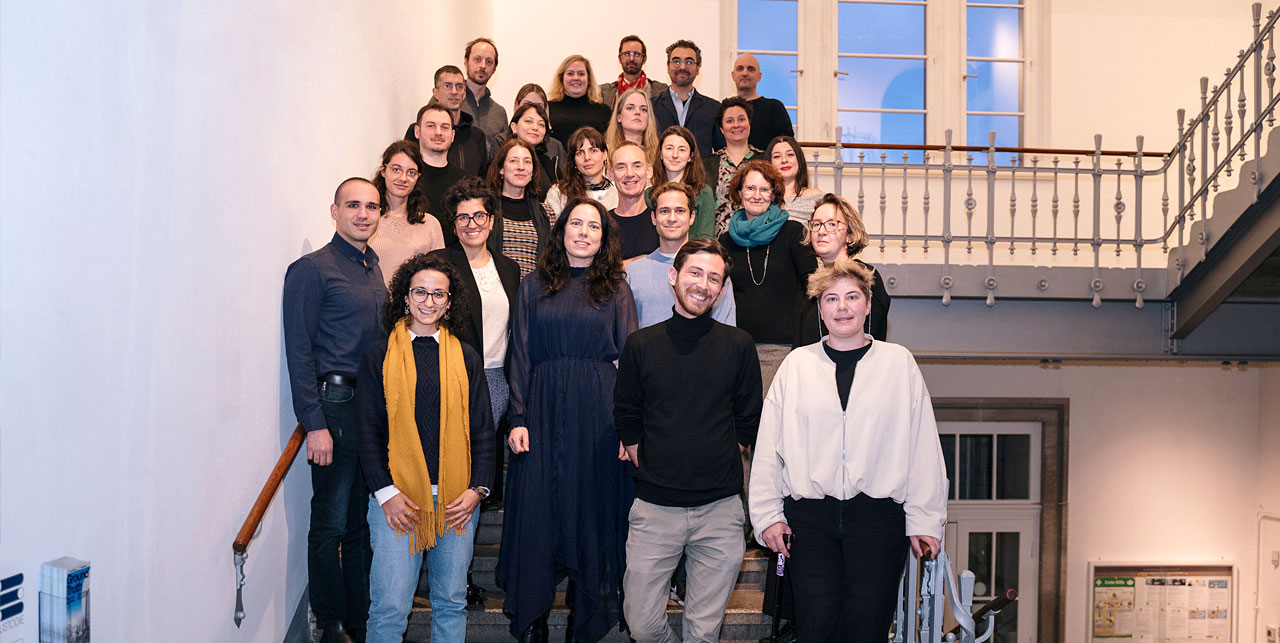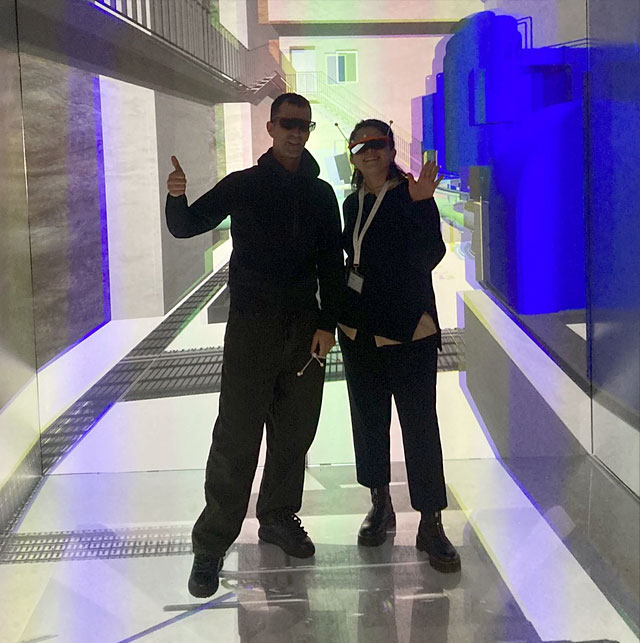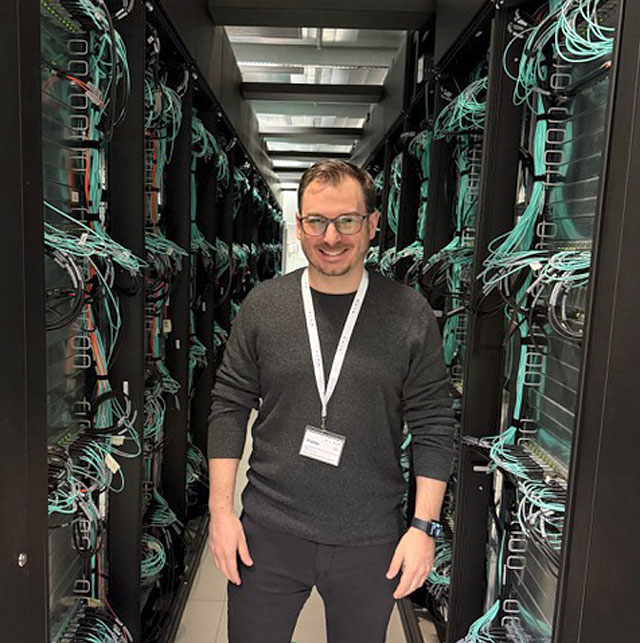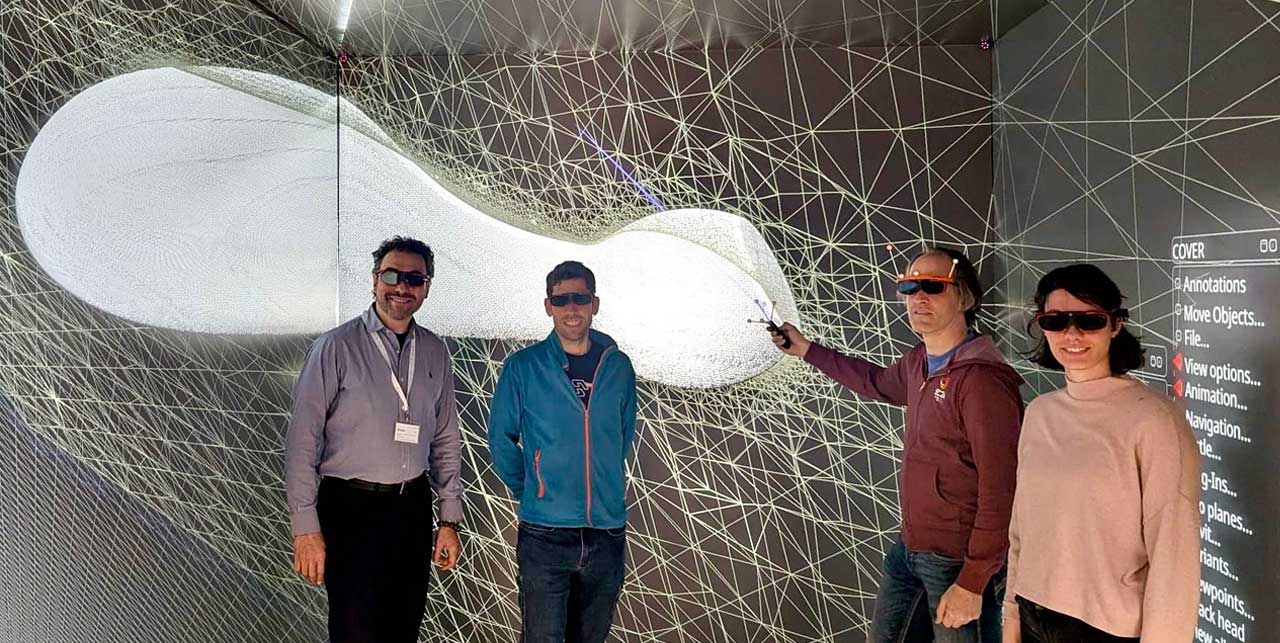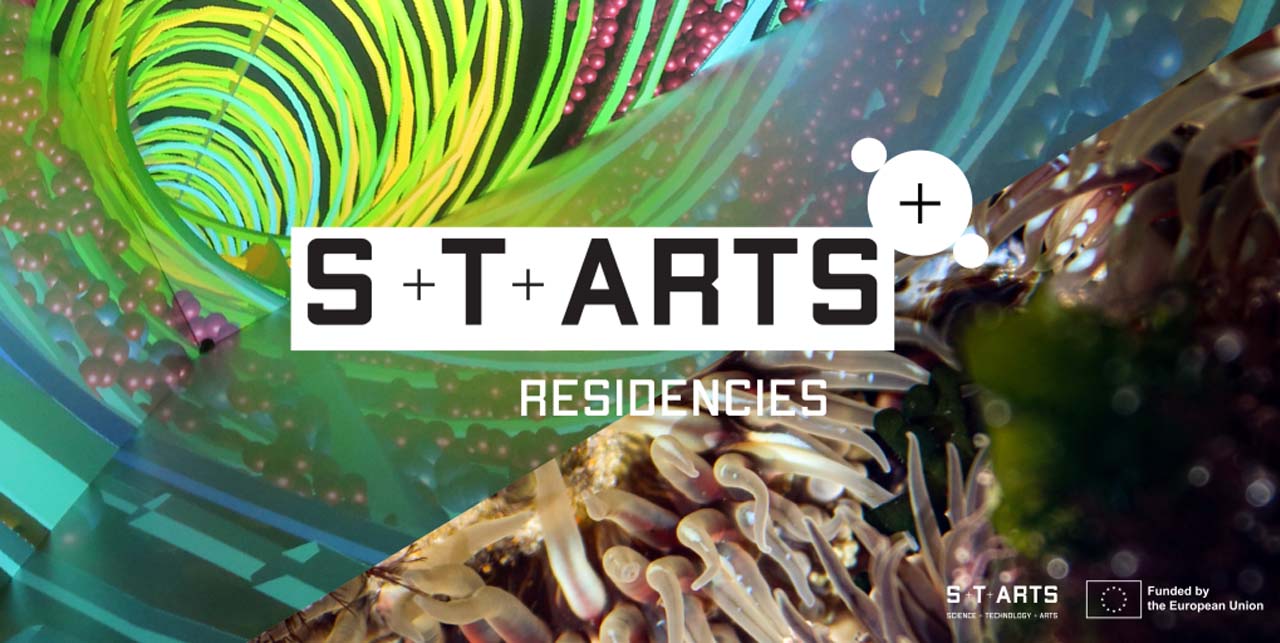
S+T+ARTS is an initiative of the European Commission to foster alliances of technology, science and artistic practice to nurture innovation and benefit the art world. As part of the broader initiative, S+T+ARTS EC(H)O aims for the objective of building towards the triple transformation and developing artist-led approaches through creative experimentation and recognizing the most successful ones.
Through an open call, this residency program offers artists an opportunity to work on these major questions of tomorrow and to bring new perspectives to human-centered and sustainable projects, in the form of a work of art or a functional or speculative artistic prototype. For 13 months, the S+T+ARTS EC(H)O project is promoting 10 residencies hosted in different institutions throughout Europe, centered on the triple transformation: social, green and digital.
The programme includes:
- __A funding of 40.000€ per challenge;
- __Guidance and support by the S+T+ARTS EC(H)O Residency Host Institutions;
- __Access to experts;
- __A kick-off meeting on-site at the Dresden University of Technology in December 2024;
- __An incubation programme to support the residency teams in kickstarting the pilots and nurturing them to accelerate their impact;
- __An impact assessment to evaluate the potential impact of scenarios and prototypes developed.
We as MSC are involved with the following four artistic residencies with scientific challenges provided by our core member/partner HLRS:
“VR Terroir” by Bernat Cuní - Virtual Representations of Users (Challenge #5)
VR Terroir by Bernat Cuní is a research project exploring user representation in Virtual and Augmented Reality environments. While HLRS provides advanced solutions for immersive scientific data exploration, one of the challenges with building such collaborative VR environments lies in creating user avatars that avoid the “uncanny valley,” support non-verbal communication, and balance realism with abstraction. Inspired by the concept of terroir in winemaking—where local soil, climate, and culture shape the final product VR Terroir proposes a new approach to digital identity. Instead of generic, sterile, and biased representations, avatars would reflect hyperlocal cultural and environmental influences, grounding virtual presence in meaningful, place-based authenticity.
“Looping” by Oliver Kruse - Technological solutions inspired by nature (Challenge #6)
In his project Looping Oliver Kruse draws inspiration from nature’s aerodynamics, more specifically the maple seed’s effortless flight patterns. His project combines his unique artistic vision with advanced computational modelling, simulation and visualization - core competences of HLRS. Within the timeframe of the residency, the aimed for result is a 6 meter wide maple seed inspired wing sculpture built out of metal by collaborators at Kälin Aero and at least one test flight. The way there is riddled with artistic/scientific experiments, flight simulations and a multitude of prototypes out of diverse materials. The initial interest of the aerodynamics community is a promising sign for the possibility of a more concrete exploitation of the project’s results in the realm of aircraft design.
“HPC Data Symphonies” by Krill Benzi - Transforming Logs into Visual Narratives (Challenge #7)
With HPC Data Symphonies Kirell Benzi transforms the high-performance computing logs of HLRS into immersive WebVR visualizations, making it easy and intuitive to interact and even converse with this otherwise rather abstract data. His work with HLRS' converged computing department explores real-time data interaction through clustering algorithms and local language models, merging aesthetics and technology.
“Merging Visions” by Merve Sahin - Urban Digital Twins for the Salzburg Festival (Challenge #8)
Merging Visions by Merve Sahin is a research-driven project that explores and extends the concept of digital twins by combining the artist’s creative vision with the HLRS visualization department’s experience with urban digital twins using our consortium partner Salzburg Festival and their latest building project as a case study. Together they aim to create a mixed-reality experience that combines digital media with tangible interfaces and allows audiences to explore urban twins in a new way. Specifically, the newly planned festival area of Salzburg Festival will become the main exploration point - though this research could have a broader impact on the way cities, urban environments, festivals and public spaces are planned and envisioned.
Explore the six other challenges by consortium partners Technische Universität Dresden, Ars Electronica, European Space Policy Institute and University of Avignon:
The residency program is still in active operation until the end of the year and welcomes all and any MSC internal/external collaborators to participate. If you are interested in a specific residency project and see synergies with your area of work, please contact our S+T+ARTS EC(H)O project manager Matvey Fridman: matvey@msc-bw.com
STARTS EC(H)O is co-funded by the European Union under the STARTS – Science, Technology and Arts initiative of DG CNECT (GA no.-101135691). Views and opinions expressed are those of the author(s) only and do not necessarily reflect those of the European Union or DG CNECT. Neither the European Union nor the granting authority can be held responsible for them.

